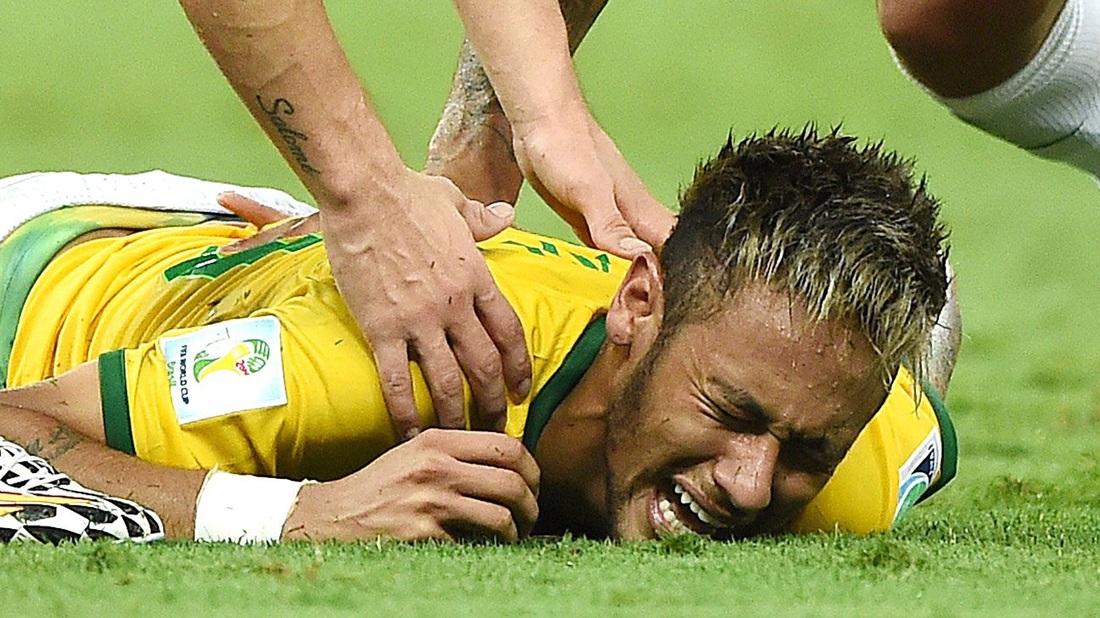|
The contrast between baseball and soccer, my two favorite sports, was never more apparent than this past week.
With baseball acknowledging the yawning length of games – now over three hours and getting worse – soccer returned (was it ever away?) in Europe with matches under two hours. This is a huge advantage for soccer. A fan can commit to a match, or even half a match, without falling into a slack-jawed stupor in front of one of those four-hour Sunday-night horrors the Yanks always seem to be playing. I made the decision last Saturday morning that I could afford to watch the first half of Manchester United and was rewarded with the delicious sense that it was 2013-14 all over again. (Man U, lost, 2-1.) Then I came back from chores to watch the second half of Everton, with Tim Howard picking up where he left off for the USA in the World Cup, trying to overcome a weak back four. (Everton coughed up a tying goal, late.) Two welcome chunks of the Premiership, and it was not yet noon. Meantime, baseball is acknowledging that the average time of a game has gone from 2 hours 35 minutes to 3 hours 2 minutes 47 seconds -- the longest on record, according to Tyler Kepner in the Times. One reason the games get longer was noted by Howard Kitt, once a promising lefty in the Yankee chain, who has been a specialist in antitrust issues with a keen eye on sports business. (I covered him helping win county titles in basketball and baseball at Oceanside High around 1960.) Kitt, who advanced as high as AAA ball, listed one cause of long games – “the number of pitching changes per game, especially in the late innings. “When I played, there were three categories of pitchers: starters, long relievers and short relievers. Starters were expected to finish; long relievers were used when a starter didn't have it; and short relievers were used when a starter ran out of gas and/or when a fresh arm was needed to finish a tight game. Closers? Never hoid of 'em! “Now, the last three innings frequently take at least as long as the first six because of the number of pitching changes by each side. Think about it: A manager walks out to the mound; signals for a reliever; who comes in from somewhere beyond the outfield fence; who then proceeds to take eight warmup pitches (hardly necessary simply to get a feel for the mound, given that the pitcher is already warm); after which--finally--the game resumes. Multiply that time two or three times per team, and some real time elapses (this can easily be verified with a stopwatch).” Kitt, who understands the importance of commercials in televised sports, added: “If this is required by TV sponsors, understood; if not, limit the number of changes per inning and watch the game speed up.” Asked about the number of pitchers who seem to fall apart these days, Kitt cited the high salaries since free agency. Players don’t have to take off-season jobs as they did back in the 60’s and can work out virtually all year. Do their bodies ever really rest? However, no sport grinds its players down more greedily than soccer. We saw Champions League-level players trudge into the World Cup in early June and many of them were still slogging into July. A few weeks after the final, my favorite-named player, Bastian Schweinsteiger of Germany, flew across the world for a meaningless friendly and was creamed by a red-hot player from Major League Soccer. Now he’s out six weeks. Soccer, under the see-no-evil “leadership” of Sepp Blatter, does not care. On Monday, Neymar of Brazil, last seen writhing on the grass with a broken back on July 4, was running around Camp Nou on Barcelona, along with his new playmate, Luis Suarez, he of the health-hazard choppers. I know Suarez is suspended from some league and national matches, but shouldn’t he be banned from going out in public until he is trained? On Tuesday, some of the lads were playing in an early round of the Champions League. But at least soccer league matches are over in two hours, whereas baseball could be dawdling toward irrelevancy.
Alan Rubin
8/19/2014 10:49:13 am
George
George Vecsey
8/19/2014 01:27:12 pm
Alan, you have a good point. None of that will happen under Blatter, who cannot exhibit leadership because he is so tied up in the politics and money of soccer. His regime was labelled "careless" by a judge in Munich. I would add, at best.
Howard Kitt
8/20/2014 04:33:00 am
Perhaps some of the reluctance can be traced to the draconian nature of the red card (or two yellows, whichever comes first).
Alan Rubin
8/20/2014 07:32:47 am
Howard
Josh
8/20/2014 08:57:17 am
As the above-referenced son, I'll just add that the Mets' opponent was the Phillies, that the twi-night doubleheader in question was in the midst of the Mets' amazing late summer drive for the division and then world series in 1969, that the Mets took both games, and that we were repeatedly showered by peanut shells tossed by an inconsiderate fan in the upper deck.
howard kitt
8/20/2014 08:35:19 am
Alan
George Vecsey
8/20/2014 09:22:40 am
Howard, my bad. I covered both the BB and BKB finals for Newsday...and I casually looked up Section 8 champions in soccer, and saw Oceanside won in 58 and 63...you must have been a sophomore in 58? I knew you and Art Heyman had played on a good team. sorry, George
howard kitt
8/20/2014 09:39:00 am
Just giving you some gas--what are friends for?
George Vecsey
8/20/2014 09:41:23 am
I still think the scariest thing I ever saw covering high school sports was Art Heyman with that wild smile wielding scissors to cut down the net at the top of a 10-foot ladder. G
howard kitt
8/20/2014 10:22:23 am
I was underneath him--how do you think I felt? Comments are closed.
|
Categories
All
|











